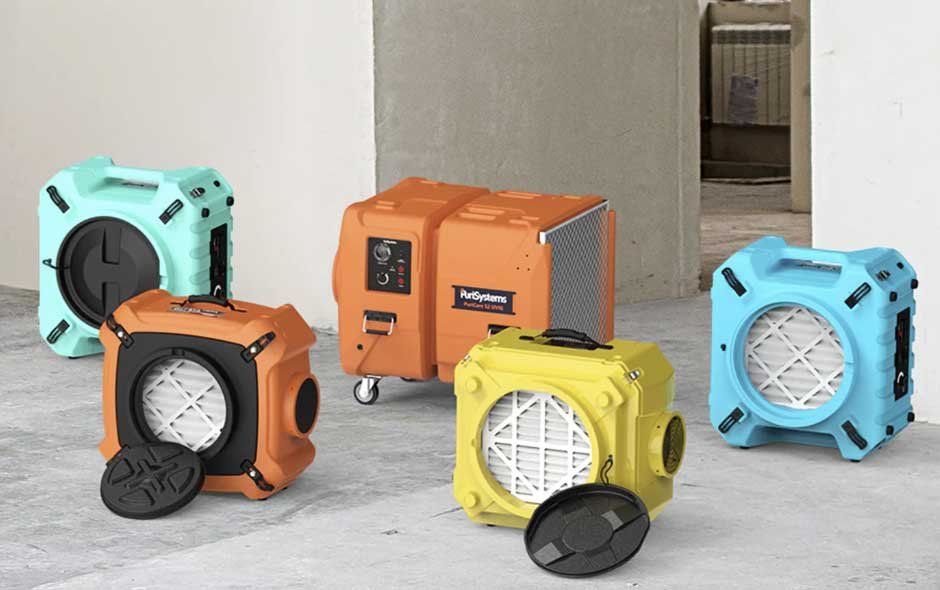Fire restoration is a complex and multifaceted process that goes far beyond simply removing charred debris and repainting walls. It involves a meticulous approach to identifying hidden damage, eliminating hazardous contaminants, and restoring indoor air quality to safe levels. Among the most critical tools and technologies used in modern fire restoration projects are thermal imaging cameras, air scrubbers, and HEPA filtration systems. Each of these plays a unique and indispensable role in ensuring that a property is not only visually restored but also safe and healthy for occupancy.
Understanding the Hidden Damage of Fire
Fires can cause extensive damage that is not always visible to the naked eye. While scorched walls and ceilings are obvious signs of destruction, the real danger often lies beneath the surface. Heat can travel through walls and ceilings, damaging structural components, electrical systems, and insulation. Smoke and soot can infiltrate HVAC systems, ductwork, and hidden cavities, leaving behind toxic residues and persistent odors. Water used to extinguish the fire can also lead to mold growth if not properly addressed. This is where advanced diagnostic tools like thermal imaging come into play.
Thermal Imaging: Seeing Beyond the Surface
Thermal imaging cameras are essential in the initial assessment phase of fire damage restoration Brooklyn. These devices detect infrared radiation and translate it into visual images that reveal temperature variations across surfaces. In the context of fire restoration, thermal imaging helps identify areas of hidden heat retention, moisture intrusion, and structural compromise.
For example, after a fire has been extinguished, certain areas may still retain heat, posing a risk of re-ignition. Thermal imaging allows restoration professionals to detect these hotspots and take appropriate action. Additionally, water used during firefighting efforts can seep into walls and floors, creating the perfect environment for mold growth. Thermal imaging can pinpoint these moisture-laden areas, even when they are not visible, enabling targeted drying and remediation efforts.
Moreover, thermal imaging is invaluable for assessing the integrity of electrical systems. Fire can damage wiring and circuit breakers, increasing the risk of future electrical fires. By identifying abnormal heat patterns, technicians can isolate and repair compromised components before they become hazardous.
Air Scrubbers: Purifying the Environment
Once the structural and moisture-related issues have been identified and addressed, the next major concern in fire restoration is air quality. Fires release a wide range of harmful particulates and gases, including carbon monoxide, volatile organic compounds (VOCs), and fine soot particles. These contaminants can linger in the air long after the flames are extinguished, posing serious health risks to occupants.
Air scrubbers are portable filtration devices designed to remove airborne contaminants from the environment. They work by drawing in polluted air, passing it through a series of filters, and then releasing clean air back into the space. In fire restoration, air scrubbers are typically deployed during the cleaning and demolition phases to capture soot, dust, and chemical residues that become airborne during these activities.
The effectiveness of an air scrubber depends largely on the quality of its filtration system. This is where HEPA filters come into play.
HEPA Filtration: Capturing the Smallest Threats
High-Efficiency Particulate Air (HEPA) filters are capable of capturing 99.97% of particles as small as 0.3 microns. This includes fine soot, mold spores, and many types of bacteria and viruses. In fire restoration, HEPA filtration is critical for ensuring that the air is not only visibly clean but also free from microscopic contaminants that can cause respiratory issues and other health problems.
HEPA filters are used in conjunction with air scrubbers and negative air machines to create controlled environments during restoration. For instance, when removing fire-damaged materials or cleaning soot-covered surfaces, HEPA-equipped air scrubbers help prevent the spread of contaminants to unaffected areas. This containment strategy is especially important in homes with vulnerable occupants, such as children, the elderly, or individuals with pre-existing health conditions.
In addition to portable air scrubbers, HEPA filters are also used in vacuum systems and HVAC cleaning equipment. This ensures that soot and debris are not reintroduced into the environment during the cleaning process. By maintaining a high standard of air purity throughout the restoration project, HEPA filtration plays a vital role in safeguarding the health of both workers and future occupants.
Integrating Technology for Comprehensive Restoration
The integration of thermal imaging, air scrubbers, and HEPA filtration represents a holistic approach to fire restoration. Each technology addresses a specific aspect of the restoration process—thermal imaging for detection, air scrubbers for purification, and HEPA filters for containment and health protection. When used together, they enable restoration professionals to deliver results that go beyond surface-level repairs.
This integrated approach also enhances efficiency and accuracy. Thermal imaging reduces guesswork and minimizes unnecessary demolition by pinpointing problem areas. Air scrubbers and HEPA filters maintain a clean and safe work environment, allowing crews to work more effectively and reducing the risk of cross-contamination. The result is a faster, safer, and more thorough restoration process that meets the highest standards of safety and quality.
Conclusion
Fire restoration is a demanding endeavor that requires more than just manual labor and cleaning supplies. It demands a scientific and technological approach to uncover hidden damage, eliminate health hazards, and restore indoor environments to a livable condition. Thermal imaging, air scrubbers, and HEPA filtration are not just optional tools—they are essential components of any modern fire restoration project. By leveraging these technologies, restoration professionals can ensure that homes and businesses are not only rebuilt but truly restored to a state of safety, comfort, and peace of mind. Transform your home with expert craftsmanship and innovative design solutions from Zicklincontracting.com, where every renovation begins with your vision.







